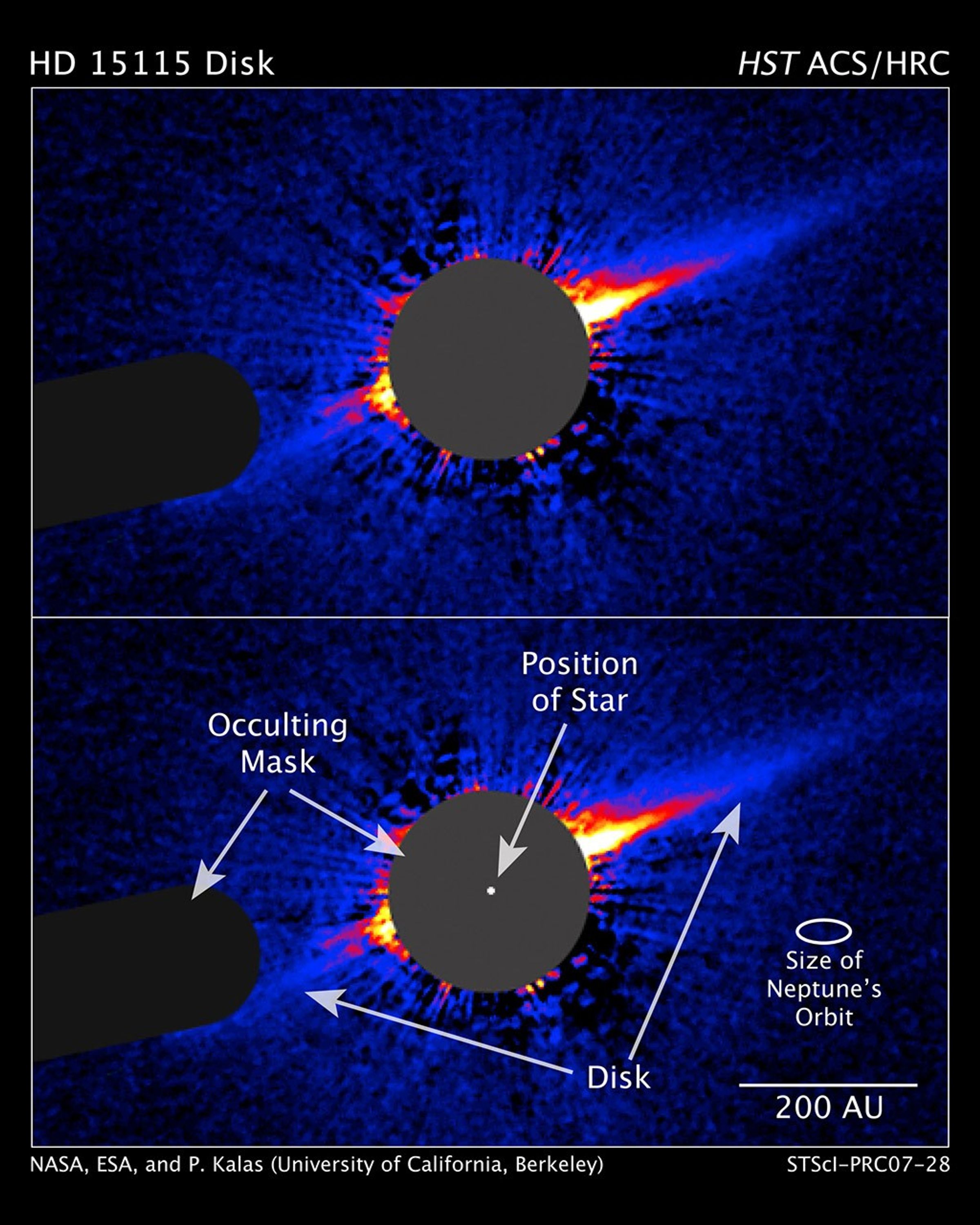1 min read
HD 15115, July 17, 2006: Annotated

About the Object
- R.A. PositionR.A. PositionRight ascension – analogous to longitude – is one component of an object's position.02h 26m 16.27s
- Dec. PositionDec. PositionDeclination – analogous to latitude – is one component of an object's position.06° 17' 32.89"
- ConstellationConstellationOne of 88 recognized regions of the celestial sphere in which the object appears.Cetus
- DistanceDistanceThe physical distance from Earth to the astronomical object. Distances within our solar system are usually measured in Astronomical Units (AU). Distances between stars are usually measured in light-years. Interstellar distances can also be measured in parsecs.150 light-years (45 parsecs)
- DimensionsDimensionsThe physical size of the object or the apparent angle it subtends on the sky.This image is 23 arcseconds (roughly 1000 Astronomical Units) across.
About the Data
- Data DescriptionData DescriptionProposal: A description of the observations, their scientific justification, and the links to the data available in the science archive.
Science Team: The astronomers who planned the observations and analyzed the data. "PI" refers to the Principal Investigator.This image was created from data from the HST proposal 10896: P. Kalas, J. Graham, M. Fitzgerald (University of California, Berkeley). - InstrumentInstrumentThe science instrument used to produce the data.HST>ACS/HRC
- Exposure DatesExposure DatesThe date(s) that the telescope made its observations and the total exposure time.July 17, 2006, Exposure Time: 35 minutes
- FiltersFiltersThe camera filters that were used in the science observations.F606W (V)
- Object NameObject NameA name or catalog number that astronomers use to identify an astronomical object.HD 15115
- Object DescriptionObject DescriptionThe type of astronomical object.Star with Debris Disk
- Release DateJuly 19, 2007
- Science ReleaseAstronomers Find Highly Elliptical Disk Around Young Star
- Credit

Compass and Scale
Compass and ScaleAn astronomical image with a scale that shows how large an object is on the sky, a compass that shows how the object is oriented on the sky, and the filters with which the image was made.
Related Images & Videos

Hubble Reveals Lopsided Debris Disk Around Star
This image taken by NASA's Hubble Space Telescope shows a lopsided debris disk around the young star HD 15115. The disk, seen edge-on, is the dense blue line extending from the star to the upper right and lower left of the image. As seen from Earth, the edge-on disk resembles a...
Share
Details
Last Updated
Aug 17, 2025
Contact
Media
Claire Andreoli
NASA’s Goddard Space Flight Center
Greenbelt, Maryland
claire.andreoli@nasa.gov





























